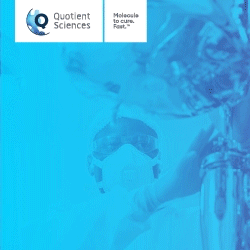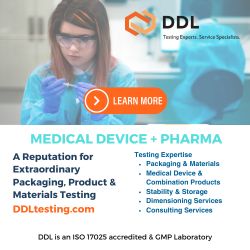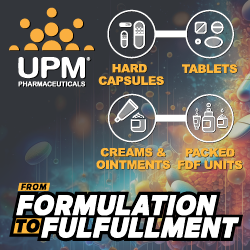Bio Platforms
Aqualung Therapeutics Awarded NIH Fast-Track Award
Aqualung Therapeutics, an early stage biotech company developing an immune-focused, anti-inflammatory therapeutic platform for unchecked inflammation in patients with serious acute and chronic diseases, has been awarded….
OXGENE Introduces TESSA Technology for Robust & Reproducible AAV Manufacture at Scale
OXGENE recently announced the launch of its scalable, plasmid-free manufacturing system for AAV. OXGENE’s new TESSA technology addresses….
T-knife & Catalent Sign Technology Transfer & Manufacturing Agreement
T-knife GmbH and Catalent recently announced they have signed an agreement to provide technology transfer and CGMP clinical manufacturing of T-knife’s T1367 T-cell receptor (TCR) program…..
ARCA biopharma Announces Submission of IND Application
ARCA biopharma, Inc. recently announced it has submitted an Investigational New Drug (IND) application with the US FDA under the Coronavirus Treatment Acceleration Program (CTAP) to…
CombiGene & Cobra Biologics Sign Agreement to Secure GMP Production of Plasmids for Production of Gene Therapy
Cobra Biologics and CombiGene AB (publ) (CombiGene) recently announced they have signed agreements covering Good Manufacturing Practice (GMP) production of two essential….
Gain Therapeutics Announces Research Collaboration With Sumitomo Dainippon Pharma
Gain Therapeutics, Inc. recently announced it has entered into a strategic research collaboration agreement with Sumitomo Dainippon Pharma Co., Ltd. for the research and development of….
Novus Announces Acquisition of Anelixis
Novus Therapeutics, Inc. recently announced it has completed the acquisition of Anelixis Therapeutics, Inc., a privately held clinical-stage biotechnology company developing a next-generation….
Arctoris & Syntekabio Form Drug Discovery Research Partnership
Arctoris has recently signed a Memorandum of Understanding with listed Korean company Syntekabio, Inc. to collaborate on drug discovery efforts. The first project under the…
Imanis Life Sciences Presents a First-in-Class Neutralizing Antibody Test for COVID-19
Imanis Life Sciences, LLC recently announced presentations about the development and validation of IMMUNO-COV, the first scalable, quantitative neutralizing antibody test for COVID-19. The company…
Fortress Biotech Announces Initiation of Phase 3 Studies
Fortress Biotech, Inc. recently announced that Caelum Biosciences, Inc., in collaboration with Alexion Pharmaceuticals, Inc., initiated the Cardiac Amyloid Reaching for Extended Survival (CARES) Phase…
Vaxart Announces FDA Clearance of IND Application for Oral COVID-19 Vaccine
Vaxart, Inc. recently announced the US FDA has completed its review of the company’s Investigational New Drug (IND) application for its Phase 1 clinical trial…
Catalent to be Added to S&P 500 Index
Catalent, Inc. (NYSE: CTLT), the leading global provider of advanced delivery technologies, development, and manufacturing solutions for drugs, biologics, cell and gene therapies, and consumer…
Peptilogics Receives FDA Orphan Drug Designation for Novel Peptide Therapy for the Treatment of Prosthetic Joint Infections
Peptilogics recently announced that the US FDA has granted Orphan Drug Designation for PLG0206, the company's first-in-class, broad-spectrum antibiotic peptide, for the treatment of prosthetic…
MilliporeSigma Announces $65-Million Antibody-Drug Conjugate Manufacturing Expansion
MilliporeSigma recently announced a $65-million expansion of its HPAPI and ADC manufacturing capabilities and capacity at its facility near Madison, WI. This investment will allow…
Catalent Invests $130 Million to Add Additional Manufacturing Capacity at its Gene Therapy Campus
Catalent recently announced it is investing $130 million to add five additional Phase 3 through commercial-scale manufacturing suites to its gene therapy campus in Harmans,…
RedHill Biopharma’s Opaganib Demonstrates Complete Inhibition of SARS-CoV-2
RedHill Biopharma Ltd. recently announced that opaganib demonstrated potent inhibition of SARS-CoV-2, the virus that causes COVID-19, achieving complete blockage of viral replication in an in vitro…
Liminal BioSciences Announces Resubmission of Biologics License Application
Liminal BioSciences Inc. recently announced the company, through its US subsidiary Prometic Biotherapeutics Inc., has filed a resubmission of the Biologics License Application (BLA) for…
Cymerus MSCs Demonstrate Efficacy in Preclinical Lung Disease Study
Cynata Therapeutics Limited recently announced positive efficacy data from a study of its induced pluripotent stem cell (iPSC)-derived Cymerus mesenchymal stem cells (MSCs) in a…
Vaxart’s Oral COVID-19 Vaccine Candidate Induces Potent Systemic & Mucosal Immune Responses
Vaxart, Inc. recently announced pre-publication of a manuscript titled Preclinical studies of a recombinant adenoviral mucosal vaccine to prevent SARS-CoV-2 infection. The manuscript describes the…
PhoreMost & XtalPi Sign AI-Based Collaboration Agreement
PhoreMost Limited and XtalPi Inc. recently announced they have entered into a drug discovery collaboration agreement…..
What are Bio Platforms?
Platforms (or asset-independent technologies to capture all kinds of capabilities that can be leveraged across many different drug candidate assets rather than just discovery tools that the term ‘platform’ immediately brings to mind) are ubiquitous in modern pharma. They are the product of an arms race, to secure access to the best capabilities in key areas.
Platform technologies are considered a valuable tool to improve efficiency and quality in drug product development. The basic idea is that a platform, in combination with a risk-based approach, is the most systematic method to leverage prior knowledge for a given new molecule. Furthermore, such a platform enables a continuous improvement by adding data for every new molecule developed by this approach, increasing the robustness of the platform.
But it has often been said that access to the latest technological platforms to aid efficient drug discovery and development is limited to Big Pharma, which can more easily justify the costs of creating and operating these platforms.
Benefits of Bio Platforms
Platform technologies have the ability to radically improve upon current products and generate completely novel products. In this sense, they open up new arenas for drug discovery and development, potentially increasing the number of therapeutic options for patients. Once a single compound or therapeutic has been generated and demonstrates a clinical benefit in patients, it is more likely this platform technology can successfully be applied to other therapeutic areas, derisking future compounds/products.
Complex drugs by their very nature are challenging and costly to manufacture. This, in turn, translates into higher costs for patients and other payers. In order to provide safe and effective therapies at a reasonable price, it is necessary for the industry to develop manufacturing technologies that reduce costs and provide a consistent product. While the initial investment may be larger, manufacturing costs will be lower over time as the manufacturing process is solidified.
Scale and Investment of Bio Platforms
Despite the initial upfront costs, platform technologies inevitably provide pragmatic solutions to production challenges, while yielding safer and more effective therapeutic products. It has often been said that one of the key features that distinguishes “Big Pharma” from biotech is access to the latest technological platforms to aid efficient drug discovery and development.
These platforms range from vast chemical libraries, ultra-high throughput screening and huge genetic databases in discovery, to predictive toxicology platforms, cutting-edge ‘omics’ and even deep-seated knowledge of particular therapeutic areas in development. All these platforms have two things in common: They can be used on any (or many) development candidate assets, and they cost huge sums to establish in the first place, and in a few cases each time they are used as well. Hence their restriction to the largest pharmaceutical companies (and a few of the so-called “big biotechs” that are, in many ways, indistinguishable from the old-guard pharma).
Only when you have hundreds of active projects can you justify the cost of creating and operating these platforms. Or so the mantra goes. It is access to these platforms that keeps the big companies ahead in the race to discover and develop the best medicines (or at least counterbalance the disadvantages of being large and slow-moving, depending on your point of view). But is that just an assertion? How much evidence is there to support the proposition that the efficiency gains due to these platforms outstrips the cost of creating and maintaining them?
Keeping these technologies “cutting edge” has become so expensive that increasingly we hear pharma companies talking of “pre-competitive” approaches to develop the next generation. A group of companies might develop a platform capability they then share. The principle goal of such initiatives is to access even grander and more expensive tools than individual companies could afford, rather than to dramatically cut costs (although sharing platforms rather than developing the same thing in parallel in each silo should at least keep a lid on rising costs).

















